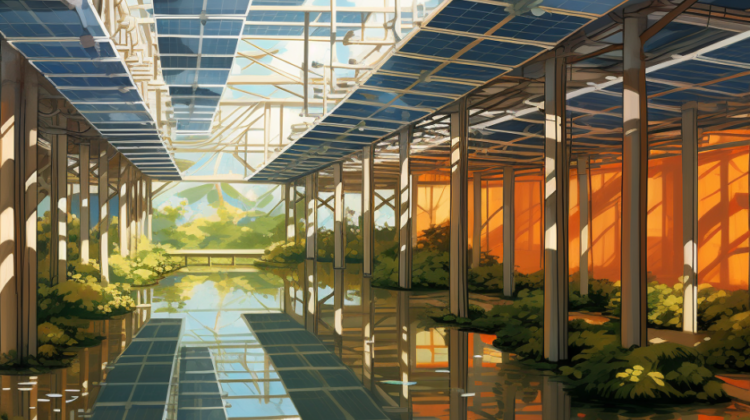
Solar panels have emerged as a clean and sustainable solution for generating electricity, harnessing the sun’s power. However, these panels are not impervious to challenges, and shading is one such obstacle that can significantly affect their performance. In this article, we will explore the impact of shading on solar panels and delve into innovative solutions that can maximize their efficiency even in the face of shading.
Shading occurs when objects such as trees, buildings, or nearby structures cast shadows on solar panels. These shadows obstruct the direct sunlight that panels need to generate electricity efficiently. In a typical solar panel system, multiple panels are connected in series, forming strings.
When one panel in a string is shaded, it reduces the overall output of the entire string, affecting the overall energy production of the system. Therefore, it becomes crucial to mitigate the effects of shading to ensure optimum performance.
One practical approach to combat shading is the utilization of bypass diodes. These diodes are integrated into solar panels and work by providing an alternative pathway for the current to flow when shaded. When a panel is partially shaded, the bypass diode allows the electricity to bypass the shaded section, preventing power loss in the entire string.
This innovative solution ensures that even if one panel is shaded, the overall energy generation of the system remains unaffected.
Another method to maximize efficiency in the presence of shading is the implementation of micro-inverters or power optimizers. Traditional solar panel systems use a single central inverter to convert the DC electricity generated by the panels into AC electricity for consumption. However, when shading occurs, the entire system’s output drops significantly.
Micro-inverters or power optimizers, on the other hand, are installed on individual panels, allowing each panel to operate independently. This way, even if one panel is shaded, the others can function optimally, ensuring higher energy production.
Furthermore, panel design and technology advancements have led to the development of smart solar panels that adapt to shading conditions. These panels incorporate sensors that detect shading and automatically adjust their orientation or electrical configuration to maximize sunlight exposure. By actively responding to shading, these panels can maintain higher efficiency levels, even in dynamic environments where shading patterns change throughout the day.
In addition to technological solutions, careful consideration of the location and placement of solar panels can also mitigate the impact of shading. Conducting a thorough site analysis before installing a solar panel system helps identify potential shading sources and design the system accordingly. One can optimize energy production and increase the system’s efficiency by strategically positioning panels to avoid or minimize shading.
Moreover, regular maintenance and monitoring of solar panels are vital to ensuring their long-term performance. By keeping panels clean and free from debris, the impact of shading can be minimized. Additionally, monitoring systems can detect and alert users to shading issues, enabling prompt action to rectify the situation and maximize energy generation.
Shading can significantly challenge solar panel systems, diminishing their efficiency and energy production. However, with innovative solutions such as bypass diodes, micro-inverters, and smart panels, the impact of shading can be mitigated. Moreover, careful planning, regular maintenance, and monitoring play a crucial role in maximizing the efficiency of solar panels in the face of shading. As we continue to harness the sun’s power, exploring and implementing these strategies is essential to ensure a sustainable and reliable renewable energy source for the future.

Leave a Reply